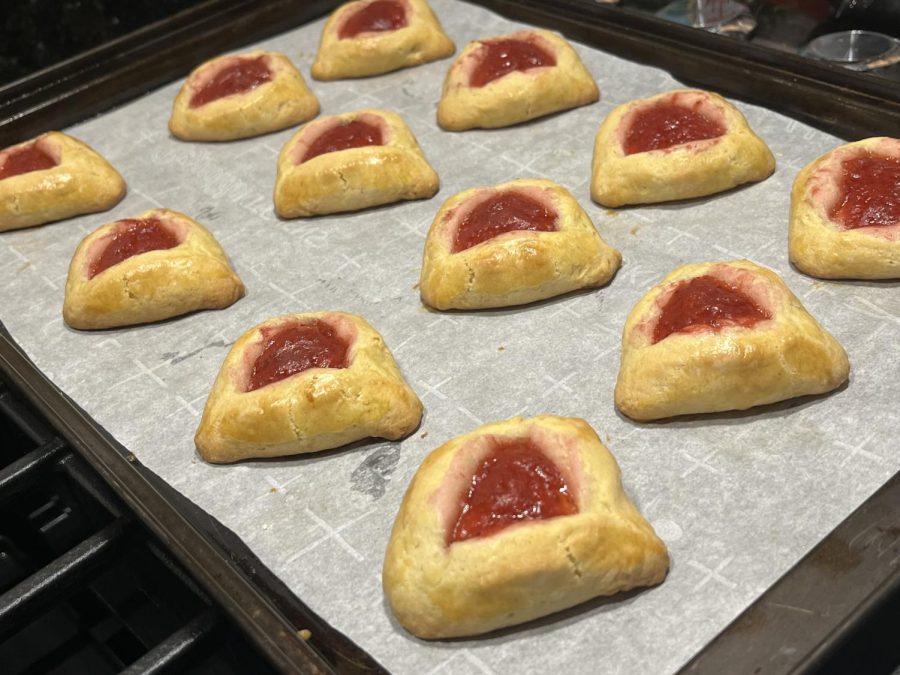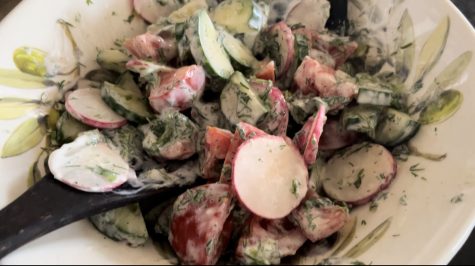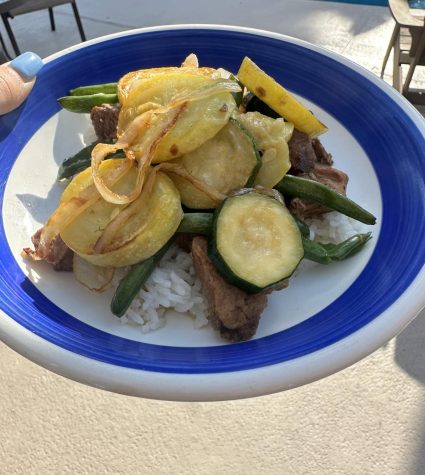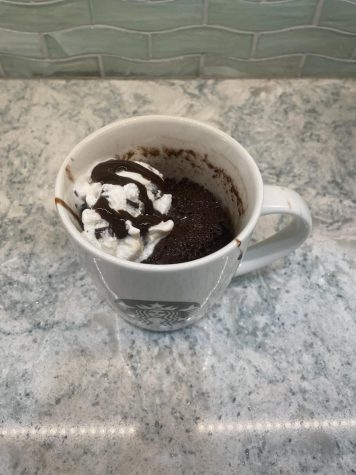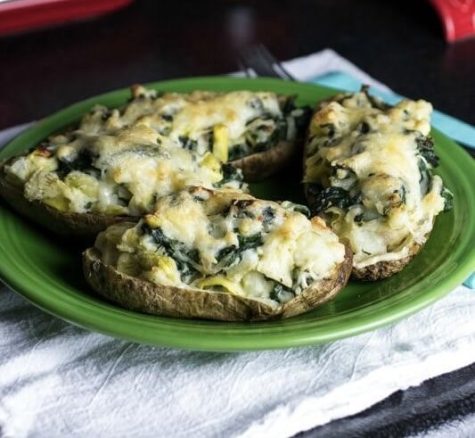Holiday Treats: Lisa’s Hamantaschen Cookies
A hamantasch is a type of cookie that you might see in the grocery store every time you visit the cookie section. Not only that they are favorited all year long, but they are also symbolically eaten on Purim, one of the biggest Jewish holidays of the year, taken place on the twelfth month of the Jewish calendar. The beautiful thing about Jewish dishes is that a lot of them have a historical meaning and many households will have family recipes passed down from many generations. Unfortunately, my grandma never got the chance to pass me her recipe, so I made my own Hamantaschen.
You will need for this recipe:
-1 large metal or glass bowl
-1 medium bowl
-3 small bowls
-1 small pot
-Whisk
-Rubber spatula
-Zester
-Dry measuring cups
-Measuring spoons
-1 small spoon
-1 circular cookie or biscuit cutter
-Rolling pin
-Pastry brush
-1 cookie tray
-Parchment paper
Tips to make your Hamantaschen bring tears of joy to any Bubbe:
- Using salted butter helps to enhance the salty flavor in the dough. However, if you are using a butter substitute or sensitive to sodium, add ½ tsp of kosher salt using unsalted butter or a neutral flavor oil.
- Most Hamantaschen recipes use margarine or oil instead of butter, because it will be kosher to consume for dessert if you eat a meat dish before it. I personally like to have cookies as a snack or at least 30 minutes after my meal, so butter is no problem. It also has a great flavor too. If you want to substitute the butter, use ½ cup of coconut oil, grapeseed oil, sunflower seed oil, or any other neutral oil you have in your home.
- Lemon zest and juice are totally optional, but just saying, it brings out a fragrant, citrus taste that compliments the sweet notes of the cookie and filling. A lot of other traditional recipes also use orange zest and juice instead, so if you prefer orange, take out a little bit of sugar to adjust the sweetness.
- The dough must be solid to shape and handle. Giving it a chance to chill will allow the dough to firm up. I haven’t tested my recipe with oil, so if you’re going that route and your dough isn’t firming, add extra flour until it does.
- Bring your eggs to room temp so it won’t cool the butter in the mixing process. In the small bowl, let it sit in warm water, but not hot water. Drain out the water, and in the same bowl, crack the eggs to catch any shells before incorporating them in your wet mixture.
- The most iconic detail of a Hamantasch is its triangular shape, which represents Haman’s hat. If you don’t know the Story of Esther, I advise looking it up, so you’ll grasp the meaning of Purim and the tradition of eating Hamantaschen on that day. To prevent the cookie from losing its shape in the baking process, wet your fingers with water and pinch the ends.
- The filling is very versatile. Hamantaschen were inspired by German cookies called Mohntaschen, meaning “poppy seed pockets”. If you want to be super traditional you can use a poppy seed filling. Other popular fillings are raspberry or apricot jam, chocolate chips, Nutella, and lekvar, which is a Hungarian apricot or prune filling. My filling is homemade Plant City strawberry jam!

Author- Lisa Donat
Prep time- 20-25 minutes
Cool time- 1 hour
Cook time- 10 minutes
Yield- 35 small cookies, 16 big cookies
Ingredients:
-1 stick salted butter (½ cup neutral oil and ½ tsp kosher salt as replacement)
-½ cup white sugar
-2 eggs room temperature + 1 egg for egg wash
-1 tbsp lemon juice
-Lemon zest
-1 tsp vanilla extract
-2 cups AP flour
-½ tsp baking soda
-½ tsp baking powder
-Homemade strawberry jam (or any filling listed in tip 7)
Instructions:
- In a medium bowl, measure and add in flour, baking powder, and baking soda. Whisk together and set aside.
- Pour water in a tiny pot a quarter to half full. Heat the water on a stove until steam comes out. Place a large metal or glass bowl on top of pot without water touching the bottom. Add stick of butter and let the steam heat up the bowl until butter is completely melted. Skip this step if replacing butter with oil.
- Set the large bowl on a kitchen towel to cool down. Add in sugar, lemon zest, lemon juice, and vanilla. Mix all together until combined, then crack in two eggs and beat them in the batter until fully incorporated with a creamy custard consistency.
- Slowly add in dry ingredients in thirds, whisking until combined. Once the last third of the dry ingredients have been added, use a rubber spatula to gently fold the batter right until there’s no clump of flour left.
- Cover the cookie batter and chill for at least an hour.
- After chilling, preheat oven to 350 degrees and grease a sheet pan. Place a layer of parchment paper on top.
- Flour a clean surface to prevent the dough from sticking. Knead dough to pat it into one big mass, then press it flat. With a rolling pin, flatten the dough to a half centimeter thickness. With a circular cookie or biscuit cutter (also can use the top of a wine glass), cut out the cookies. Carefully place the cookies onto the sheet pan, spaced out enough for hot air to circulate around.
- Spoon on top a dollop of filling. Do not over fill the cookies. Only a dollop.
- Crease each Hamantasch by gently folding the edges into a triangle. Dip your fingertips with water to seal.
- Crack and mix in an egg in a small bowl. With a pastry brush, coat the cookies before baking. Dab off any bit of egg that got on the sheet pan.
- Bake the cookies for 10 minutes. If they’re big, bake for 12 minutes.
- Cool down until the filling solidifies. Enjoy the cookies with family, friends, and the community. Store in the fridge for a week or freeze for many months.
Your donation will support the student journalists of Steinbrenner High School. Your contribution will allow us to purchase equipment and cover our annual website hosting costs.

Lisa Donat is a senior at Steinbrenner and is the co-editor for the Food section. When she graduates, she plans to open her own restaurant. Some of her...

